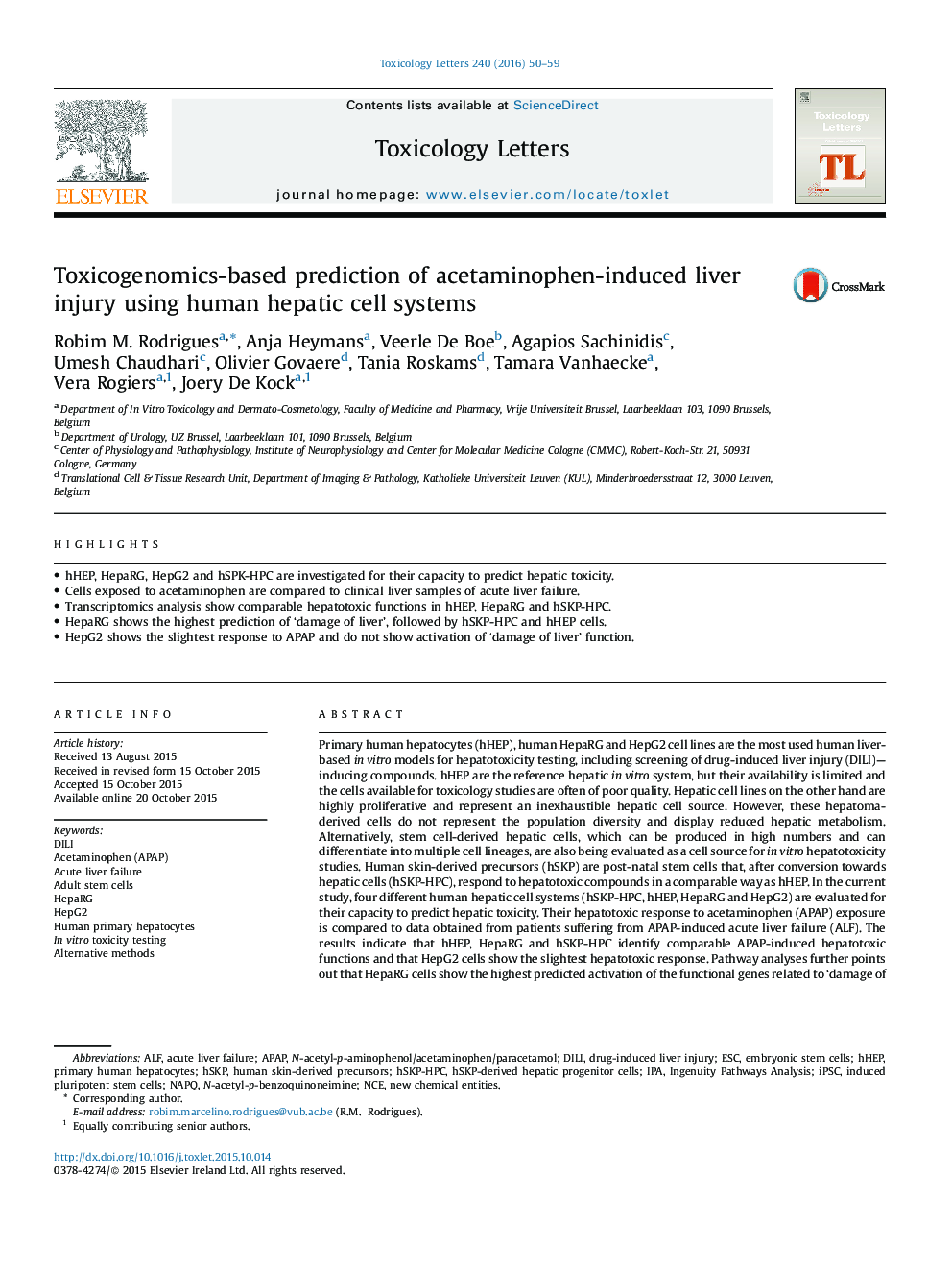| کد مقاله | کد نشریه | سال انتشار | مقاله انگلیسی | نسخه تمام متن |
|---|---|---|---|---|
| 2598591 | 1562632 | 2016 | 10 صفحه PDF | دانلود رایگان |
• hHEP, HepaRG, HepG2 and hSPK-HPC are investigated for their capacity to predict hepatic toxicity.
• Cells exposed to acetaminophen are compared to clinical liver samples of acute liver failure.
• Transcriptomics analysis show comparable hepatotoxic functions in hHEP, HepaRG and hSKP-HPC.
• HepaRG shows the highest prediction of ‘damage of liver’, followed by hSKP-HPC and hHEP cells.
• HepG2 shows the slightest response to APAP and do not show activation of ‘damage of liver’ function.
Primary human hepatocytes (hHEP), human HepaRG and HepG2 cell lines are the most used human liver-based in vitro models for hepatotoxicity testing, including screening of drug-induced liver injury (DILI)—inducing compounds. hHEP are the reference hepatic in vitro system, but their availability is limited and the cells available for toxicology studies are often of poor quality. Hepatic cell lines on the other hand are highly proliferative and represent an inexhaustible hepatic cell source. However, these hepatoma-derived cells do not represent the population diversity and display reduced hepatic metabolism. Alternatively, stem cell-derived hepatic cells, which can be produced in high numbers and can differentiate into multiple cell lineages, are also being evaluated as a cell source for in vitro hepatotoxicity studies. Human skin-derived precursors (hSKP) are post-natal stem cells that, after conversion towards hepatic cells (hSKP-HPC), respond to hepatotoxic compounds in a comparable way as hHEP. In the current study, four different human hepatic cell systems (hSKP-HPC, hHEP, HepaRG and HepG2) are evaluated for their capacity to predict hepatic toxicity. Their hepatotoxic response to acetaminophen (APAP) exposure is compared to data obtained from patients suffering from APAP-induced acute liver failure (ALF). The results indicate that hHEP, HepaRG and hSKP-HPC identify comparable APAP-induced hepatotoxic functions and that HepG2 cells show the slightest hepatotoxic response. Pathway analyses further points out that HepaRG cells show the highest predicted activation of the functional genes related to ‘damage of liver’, followed by hSKP-HPC and hHEP cells that generated similar results. HepG2 did not show any activation of this function.
Journal: Toxicology Letters - Volume 240, Issue 1, 5 January 2016, Pages 50–59
